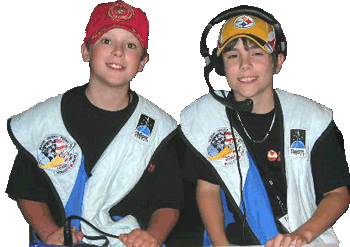
Communications Team (COM) - "Mission Control, this is the space station. Do you copy? Over?" COM Officers facilitate verbal communication between the two locations. They are skilled in reading and oral communications, and have the ability to work in high stress situations while remaining focused on specific tasks.
Data Team (DATA)
DATA Officers transfer all electronic messages between Mission Control and the space station, and access the research video library on demand. It sounds stress free until you realize that DATA Officers are transferring (and receiving!) messages from six other teams. DATA Officers rely on strong reading and oral communications and good organization skills.
Navigation Team (NAV)
Are we there yet? Navigation Officers can easily answer this one because they're responsible for navigating the spacecraft on its journey. They also coordinate launches and/or landings as the scenario requires. Navigation Officers have strong mathematics and reading skills, basic knowledge of coordinate geometry, basic knowledge of angle measurements, and an interest in astronomy.
Probe Team (PROBE)
As a member of the Probe Team, students assemble, deploy, and monitor one or more space probes launched during a mission. The position requires strong mechanical skills, proficiency in mathematics and reading, analytical problem solving, and deduction skills.
Medical Team (MED)
How does living in space affect the human body? Medical Officers are tasked with monitoring all spacecraft astronauts for auditory and visual response time, respiration rate, skin temperature, and heart rate. Skills required for this position include a strong interest in biology and proficiency in mathematics.
Remote Team (REM)
As members of the Remote Team, students work in a glovebox environment to analyze rock, mineral, and soil samples. Depending upon the mission, the REM Team also operates a robotic arm to collect rock samples for analysis.
Life Support Team (LS)
Life Support Team members take thermometer, barometer, and hygrometer readings. They also perform pH tests and TDS tests on the spacecraft water supply. The position requires strong problem solving skills and interest in environmental science and chemistry.
Isolation Team (ISO)
Isolation Team members use robotic arms to conduct research related to radioactivity, meteoroids, and hazardous materials.



